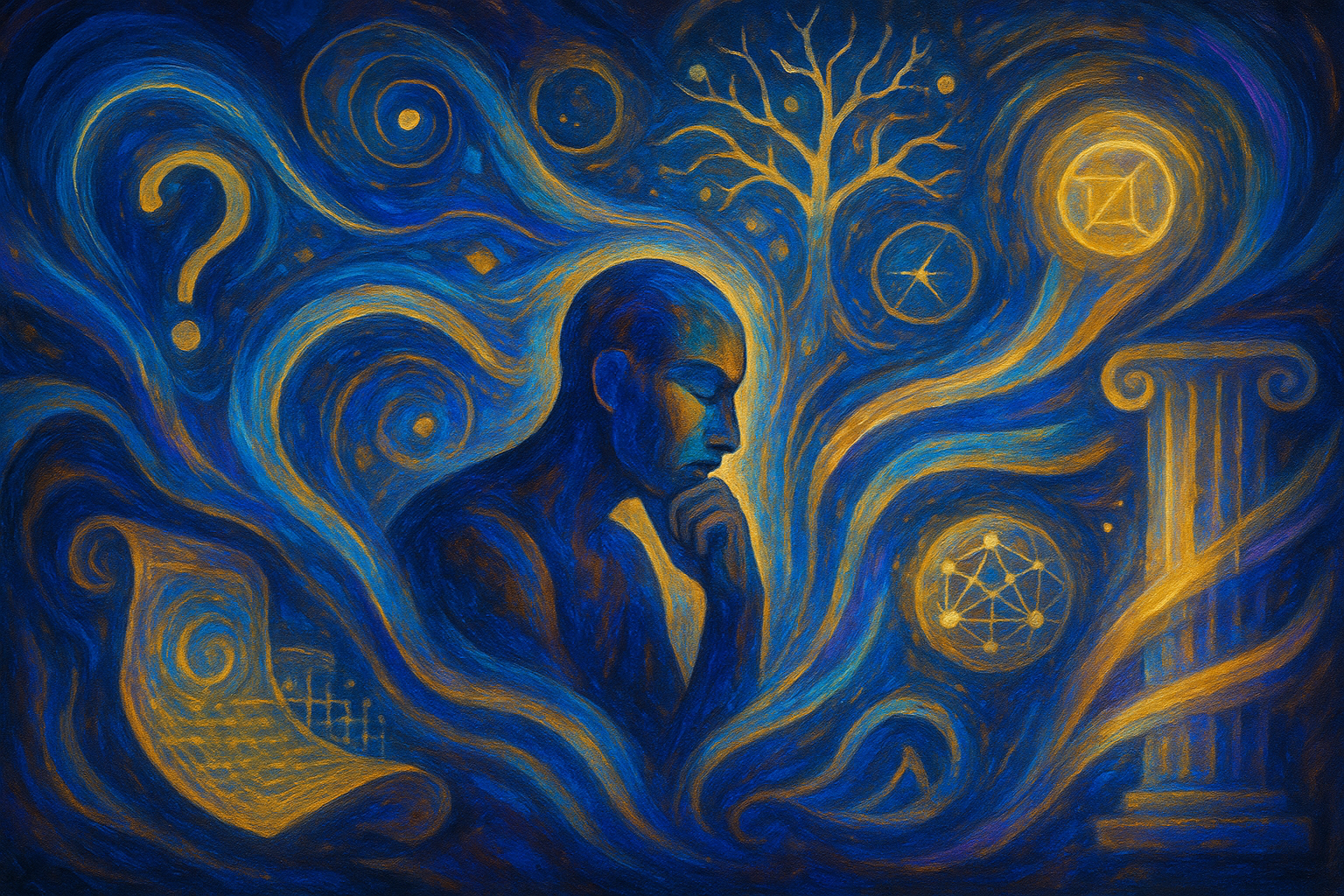Stoicism
Origin Founded in Athens by Zeno of Citium (~300 BCE).
Core Idea: Live in accordance with nature —understand what you can control and accept what you cannot.
Key Texts: Marcus Aurelius’s Meditations, Seneca’s letters, Epictetus’s Enchiridion

Core Tenets
Dichotomy of Control
What you control: Your thoughts, actions, judgments
What you don’t control: Other people’s reactions, external events.
Virtue as the Highest Good
Stoics identify four cardinal virtues:
- Wisdom – Knowing right from wrong
- Courage – Facing adversity with composure
- Justice – Acting fairly toward others
- Temperance – Moderation and self‑control.
Living virtuously is the path to true contentment (eudaimonia).
Emotional Discipline
Stoicism isn’t about suppressing feelings; it’s about transforming emotional responses:
Recognize a feeling → Question its basis → Reframe with rational insight.
“The disturbance comes not from events but from our judgments of them.” – Marcus Aurelius
Stoicism in Modern Life
- Stress Management: Reframe deadlines as opportunities to practice discipline
- Relationships: Accept that others are beyond your control; practice empathy and set boundaries
- Career & Goals: Focus on effort, not outcomes; view setbacks as learning experiments
- Digital Detox: Recognize that constant notification influx is external; choose mindful engagement
Common Misconceptions
Myth: Stoics are emotionless
Reality: They experience emotions but respond rationally.
Myth: It’s a “passive” philosophy
Reality: It requires active reflection and deliberate action.
Myth: Only ancient philosophers practiced it
Reality: Modern Stoicism is alive in mindfulness apps, self‑help books, and even corporate training.

